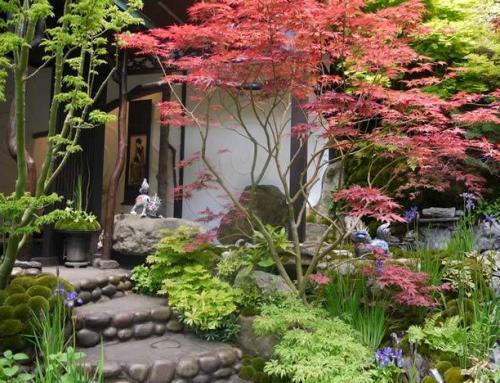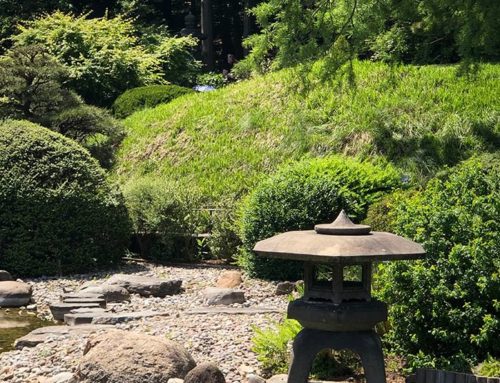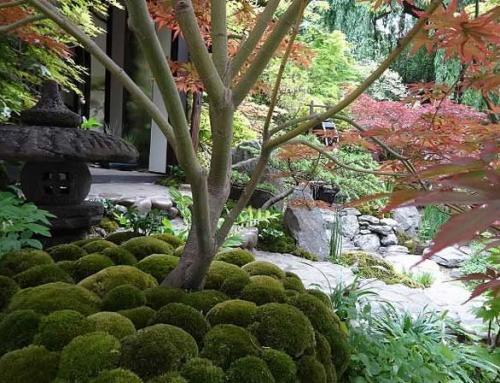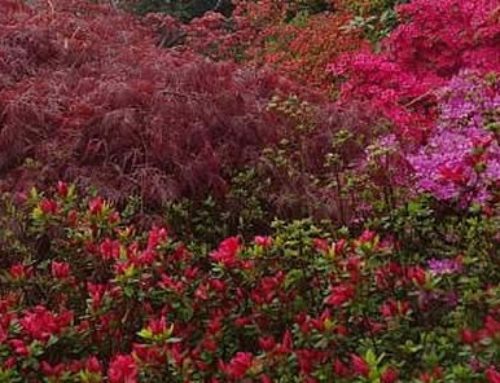Japanese Gardens In Britain
Japanese-style gardens have been admired for over a hundred years in the UK. In terms of British garden history, they’re relative newcomers that only really gained a popular foothold after the British-Japanese exhibition of 1910 when the general public was able to see Japanese life first-hand for the first time. Although not as famous as the Great Exhibition of 1851, the British-Japanese exhibition was the starting point for a Japanese-style gardening craze that’s never stopped.
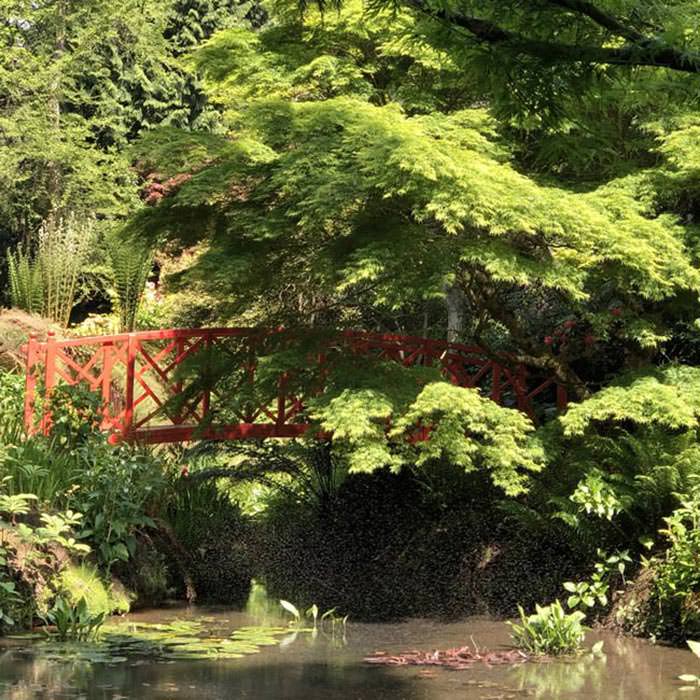
Captivating Japanese Garden at Abbotsbury
Wealthy Plant Hunters Enter Japan
In the mid to the end of the 19th century, aristocratic Brits were turning away from rigid formal gardens and embracing a new form of naturalistic planting. It was around this time, in 1854, that Japan opened its borders to the West after two hundred years of self-imposed exile.
Plant hunters and collectors and wealthy enthusiasts rushed to see the new and exciting plants on offer. John Gould Veitch shipped Japanese plants and trees to the UK in 1860 for his nursery in Kingston Upon Thames in Surrey and Leopold de Rothschild created a Japanese-inspired garden at Gunnersbury Park in London which you can visit today. Rothschild was inspired by a Japanese garden near Lake Como in the 1880s, but this kind of travel was beyond the reach of most.
The majority of landowners were introduced to the Japanese style by Josiah Conder, a British architect who had worked for the Japanese government. He wrote a book in 1893 describing the aesthetics of Japanese gardening ‘Landscape Gardening In Japan’ which was met with a rush of enthusiasm in the monied classes. For the most part, it was confined to large private gardens and parks, but that was to change when the British-Japanese exhibition was staged in Shepherd’s Bush.
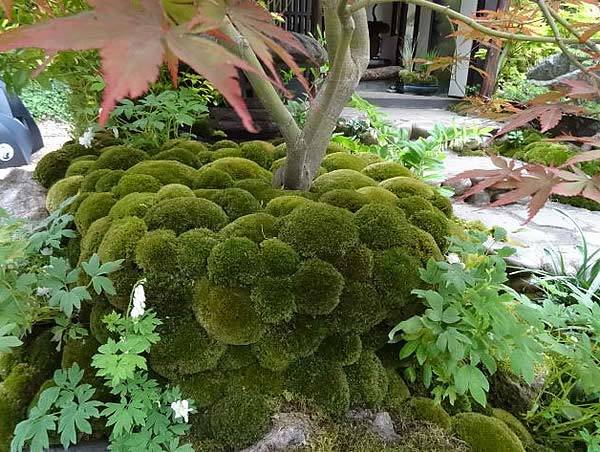
Pin cushion moss and Japanese Acers
The 1910 British-Japanese Exhibition
The British Japanese Exhibition ran from 14th May to 29th October 1910 in the White City Exhibition Space. It was a well-received sensation attracting 8 million people from across the UK and was one of the last large-scale exhibitions before two world wars made them too expensive and extravagant.
The exhibition’s aim was to showcase Japan as a modern ally. Relations were good at the time as a result of the Anglo-Japanese Alliance and the Japanese emperor Taishō was keenly interested in the exhibition and the impression it gave of his new, modern Japan. This meant only the finest artifacts, plants, and landscape gardens were displayed.
The exhibition inspired not only the wealthy to create extravagant Japanese gardens such as Alan de Tatton Egerton who invited Japanese gardeners to build an authentic garden at Tatton Park, but suburban homeowners who for the first time were able to see Japanese styles with their own eyes.
The exhibition covered everything from art, culture, engineering, health, and fashion including sumo wrestlers that scandalised Edwardians with their near-nudity, but it was the gardens that attracted the attention of plant lovers. The Garden of Peace and the Garden of Floating Islands stretched over 11 acres and were filled with Japanese plants, stones, water, and buildings.
The gardens were created from nothing by Mr. H. Izawa, a celebrated Japanese landscape artist, and their contents were imported directly from Japan. This included trees and shrubs such as Japanese maples, thuja obtuse, and azaleas, bridges, traditional wooden buildings, standing stones, raked sand and gravel, pools with cascading waterfalls, and all the workmen needed to create a little Japan in Britain. There were several teahouses scattered amongst the landscaped gardens too, so the whole experience was immersive and the crowds loved it.
A highlight was the ‘pygmy’ trees that we now know as bonsai. There were 2000 pygmy trees on display by the Yokohama Nursery Company aging from 25 to 300 years old. The British public imagination ran wild faced with such long-lived plants (as it does today).
The Gardeners Chronicle, an authority on British gardening at the time, wrote many articles on the exhibition indicating the public found not only the garden plants interesting but the architecture too.
‘The hog-backed bridge is a characteristic feature in Japanese scenery…with many pagodas, stone bridges, and quaint arches.
They ran advice articles from Japanese exhibitors on how to keep Japanese plants healthy and satisfy the interest of their readers, but they weren’t altogether praising:
‘Many of the plants were imported from Japan and many suffered the effects of drought…Another fault is the employment of too many common shrubs like privet and aucuba’.
It just goes to show you can’t please everyone!
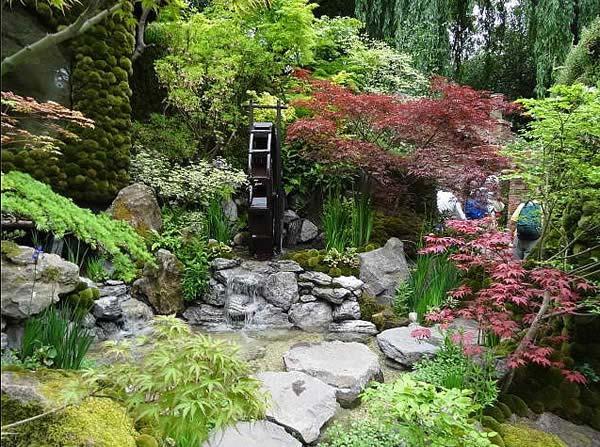
Japanese Water Feature Artisan Garden
What Happened After The Exhibition?
The exhibition was packed up and taken back to Japan and little remains today. Many artifacts displayed are in British museums, but the main buildings in Shepherd’s Bush were demolished and replaced by a housing estate in the 1930s.
However, it’s not all bad news. You can find a small area of the exhibition in the Hammersmith Park Japanese Garden which is part of the Garden of Peace. It’s the oldest public Japanese garden in the UK. In 2010 Hammersmith and Fulham Council restored the garden with the help of Japanese landscape architects Yoshihiko Uchida and Satoru Izawa. It’s been reinvigorated with ferns, rhododendrons & azaleas, and a meandering stone pathway for contemplation.
Kew houses one of the last remaining replicas of the exhibition – the carved wooden Chokushi-Mon or Gateway of the Imperial Messenger in its Japanese landscape garden. It’s a 4/5 replica of the Karamon of Nishi Hongan-ji in Kyoto, and displays carved panels demonstrating an ancient Chinese legend about the love of learning. Kew also inherited the comet fish that were another new sight to the British public that caught hold of our imaginations – think about all the koi carp ponds across the nation!
If you’re in London, one of the most popular Japanese gardens open to the public are the Kyoto gardens in Holland Park. The park is situated around the remains of Holland House which was built in 1605 but destroyed during the Blitz. Kyoto Gardens were a gift from Kyoto City as a way of commemorating the friendship between Japan and Britain and were opened in 1992. Walking through these beautiful gardens is a serene and quiet experience if you visit early or into the evening. It has tranquil tiered waterfalls, koi carp pools, stone lanterns, Japanese trees, and resident peacocks wandering about.
The gardens were created by master gardeners Shoji Nakahara and Yasuo Kitayama on gardening principles set out in the world’s oldest known gardening book the ‘Sakuteiki’, two scrolls that survive from the Heian period 785-1184. Over the years, British and Japanese ideas have fused here, but many of the original Japanese traditions remain such as the pond’s bridge which is staggered. It’s thought that evil thoughts follow a straight line, so by staggering the walkway they’re trapped and drop into the water below.
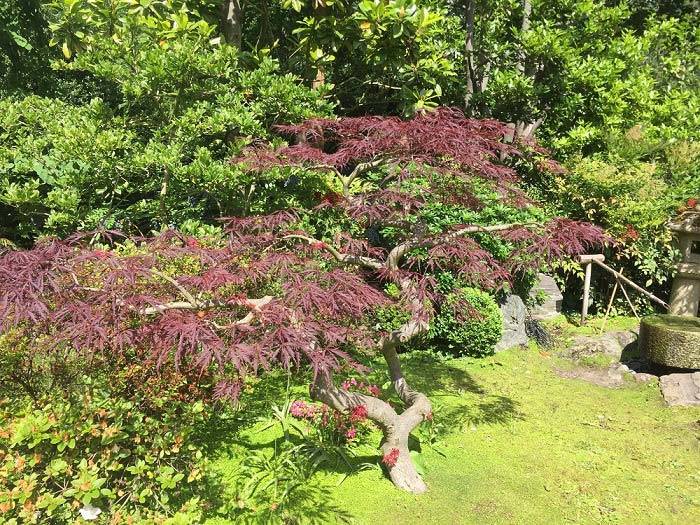
Acer Dissectum Japanese Maple at the Kyoto garden in Holland Park London
Japanese Gardens Fused With British Ideas
Over 100 years, Japanese-style gardens have fused with British gardens creating a hybrid of the two. The traditional elements are there such as bridges, stone lanterns, large rocks, pebbles, water, and Japanese plants such as azaleas, lilies, rhododendrons, palmatum acers, and bamboo, but the Brits prefer their bridges painted red – something you would never see in Japan!
As a result of the 1910 exhibition, Japanese maples, bamboo, teahouses, and pagodas soon started popping up in Britain’s suburban gardens and public spaces and it’s never stopped. The exhibition was a huge success at the time and kicked off an obsession many of us still love today. Of course, it helps that the Japanese climate is not too different from ours and allows lots of the plants to grow here without too much intervention.
Next time you’re looking for bamboo, stone lanterns, or beautiful Japanese garden inspiration, think about the Edwardians who were stunned by it for the first time over 100 years ago and whose enthusiasm made the Japanese style one of the most popular garden themes today. And indeed left us a legacy of beautiful Japanese Design Gardens here in the UK.
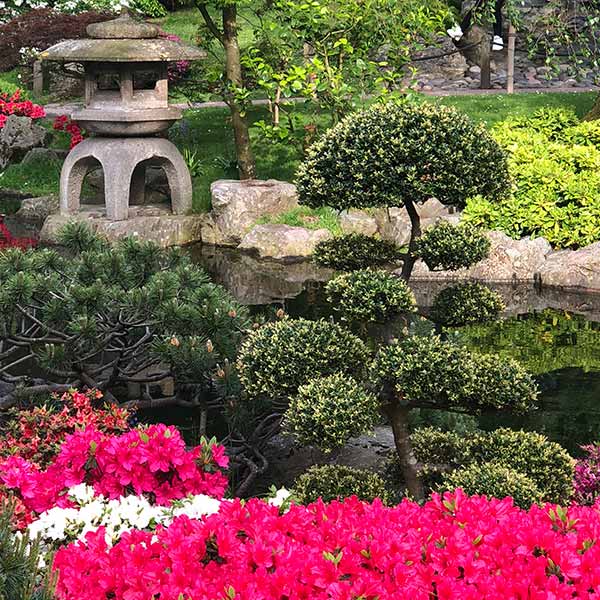
Relaxing and inspiring Japanese rock garden.

